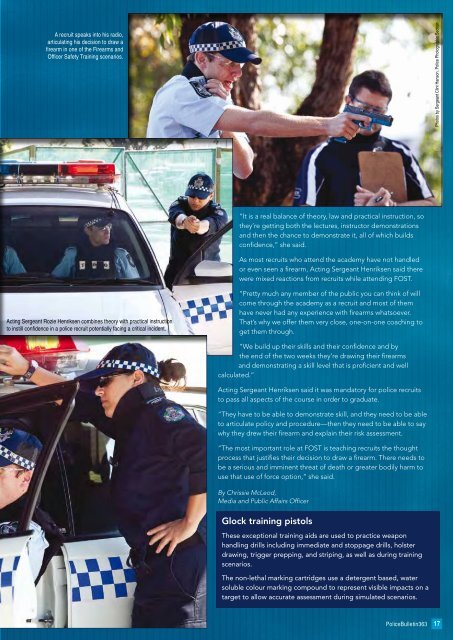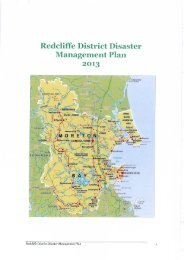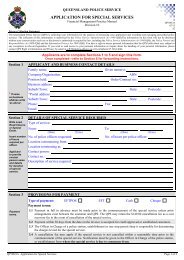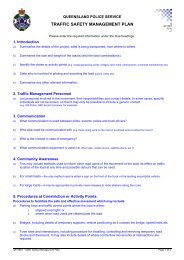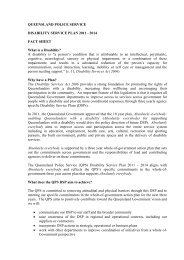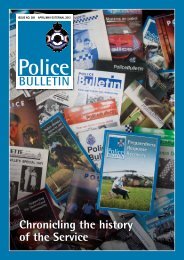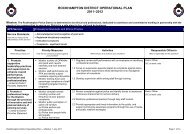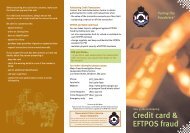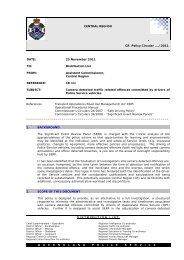Training Command - Queensland Police Service - Queensland ...
Training Command - Queensland Police Service - Queensland ...
Training Command - Queensland Police Service - Queensland ...
Create successful ePaper yourself
Turn your PDF publications into a flip-book with our unique Google optimized e-Paper software.
A recruit speaks into his radio,<br />
articulating his decision to draw a<br />
firearm in one of the Firearms and<br />
Officer Safety <strong>Training</strong> scenarios.<br />
Photos by Sergeant Clint Hanson, <strong>Police</strong> Photographic Section<br />
“It is a real balance of theory, law and practical instruction, so<br />
they’re getting both the lectures, instructor demonstrations<br />
and then the chance to demonstrate it, all of which builds<br />
confidence,” she said.<br />
As most recruits who attend the academy have not handled<br />
or even seen a firearm, Acting Sergeant Henriksen said there<br />
were mixed reactions from recruits while attending FOST.<br />
Acting Sergeant Rozie Henriksen combines theory with practical instruction<br />
to instill confidence in a police recruit potentially facing a critical incident.<br />
“Pretty much any member of the public you can think of will<br />
come through the academy as a recruit and most of them<br />
have never had any experience with firearms whatsoever.<br />
That’s why we offer them very close, one-on-one coaching to<br />
get them through.<br />
“We build up their skills and their confidence and by<br />
the end of the two weeks they’re drawing their firearms<br />
and demonstrating a skill level that is proficient and well<br />
calculated.”<br />
Acting Sergeant Henriksen said it was mandatory for police recruits<br />
to pass all aspects of the course in order to graduate.<br />
“They have to be able to demonstrate skill, and they need to be able<br />
to articulate policy and procedure—then they need to be able to say<br />
why they drew their firearm and explain their risk assessment.<br />
“The most important role at FOST is teaching recruits the thought<br />
process that justifies their decision to draw a firearm. There needs to<br />
be a serious and imminent threat of death or greater bodily harm to<br />
use that use of force option,” she said.<br />
By Chrissie McLeod,<br />
Media and Public Affairs Officer<br />
Glock training pistols<br />
These exceptional training aids are used to practice weapon<br />
handling drills including immediate and stoppage drills, holster<br />
drawing, trigger prepping, and striping, as well as during training<br />
scenarios.<br />
The non-lethal marking cartridges use a detergent based, water<br />
soluble colour marking compound to represent visible impacts on a<br />
target to allow accurate assessment during simulated scenarios.<br />
<strong>Police</strong>Bulletin363 17


